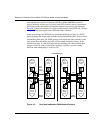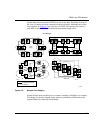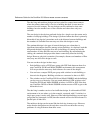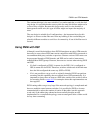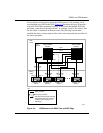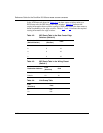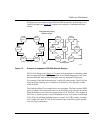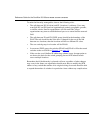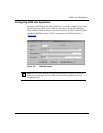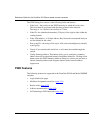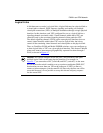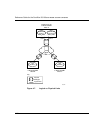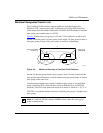
Reference Guide for the Centillion 50/100 and Model 5000BH Switches
4-14
893-01006-C
The second problem concerns PNNI groups 1, 6, and 5, which have alternate ways
to connect, either by way of the core or directly to each other. For redundancy, it is
likely that nonoptimum IISP routes will be specified, which may lead to an
unnecessarily large routing table because of the large number of potential routes.
Having large routing tables may cause problems in recovering from network
failure. On the other hand, if the three groups were connected to the core twice
(costing only two more ports in the core and a minor loss of potential available
bandwidth), the routing table reduces to two rows, which is simpler to understand
and manage.
Configuring PNNI
PNNI groups are based on switch NSAP addresses; therefore, addressing is much
more important with PNNI than with IISP, especially for large networks or
networks that at some future date may be connected to a public network. This fact
should be taken into consideration when choosing the default level and addressing
scheme. Probably the most important consideration is whether or not a registered
NSAP address will be used. Not using a registered NSAP address allows more
freedom, but the addressing must still be carefully planned to make routing tables
more manageable.
Addressing Schemes
The full (20-byte) registered NSAP ATM address is broken down as follows:
39.CCCC.RR.AAAAAA.WW.WW.XX.XX.XX.XX.YYYYYYYYYYYY.ZZ
The various fields are defined in Table 4-5
.
Table 4-5. Registered NSAP ATM Address Fields
Field Description
39 Defines the address as a DCC ATM Format.
CCCC Country code; for example, a value of 840F defines the address as
being registered in the U.S.
NOTE:
The Data Country Code (DCC) for the U.S. is actually 840,
but the specification requires this number to be left justified and
padded with Fs.
RR The registering body; for example, 80 defines this address as being
registered with ANSI.



